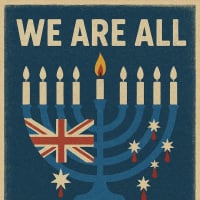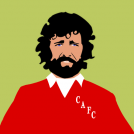Eric Lines Medal - A Plumstead/Woolwich mystery to be solved

Eric Lines was a founder member of CAFC and top scorer with nine goals in our first competitive, and league winning, season 1906/7.
This isn't a Charlton Athletic medal however.
The front is engraved EL for Eric Lines, obviously. You can see by the eyelet that it was designed to be worn, often on watch chain hanging from a waistcoat. Wrist watches didn't become popular until after WW1. And it's solid silver.
But despite being for the same 06/7 season it is for PGFC, not CAFC and for finishing 2nd in the WFCL. Charlton played in the Lewisham League Div 3
Mike Whelan thinks PGFC could be Plumstead Glendale Football Club.
We guess WFCL could be Woolwich something something League but don't know.
So anyone have any ideas or suggestions?


Comments
-
Woolwich Football Club League?0
-
This letter was sent to Harold Deacon, editor of the Kentish Independent in 1969.
I doubt the Lines still live at this address 48 years on but does anyone know the Lines family? Are they Addicks.
There is no indication as to whether Deacon replied or not and we doubt the club would have bothered to invite the old players to a game.
So frustrating for historians to see such an opportunity to interview our founders slip away.
 2
2 -
For what it is worth i lived at Claymill House 1969-1977, one of the first to move in, but don't remember any called LINES0
-
Thanksusetobunkin said:For what it is worth i lived at Claymill House 1969-1977, one of the first to move in, but don't remember any called LINES0 -
So I put this on twitter then type it up on here.
Go back to check on twitter and bingo.
Thanks to the Chesterfield FC history twitter account for finding this. 9
9 -
Is that the same league as the Woolwich & District league nowadays, if it is still operating?0
-
No idea, might have merged at some time.guinnessaddick said:Is that the same league as the Woolwich & District league nowadays, if it is still operating?0 -
There’s a woman who’s an admin on Plumstead People who is a local historian. I could perhaps see if I can messsge her on there.
I used to know a bloke by the name of Lines who is a Charlton fan but not sure how to contact him.2 -
That would be very handy @Curb_ItCurb_It said:There’s a woman who’s an admin on Plumstead People who is a local historian. I could perhaps see if I can messsge her on there.
I used to know a bloke by the name of Lines who is a Charlton fan but not sure how to contact him.
Lines isn't that common a name so could be related to Eric0 -
I don't think there's any significance to what you're after Henry, but I stumbled upon this photo on an auction site and thought it was interesting enough to post:

Sepia cabinet photograph showing man and boy wearing suits and posing with three trophies - Woolwich League Cup, West Kent Cup and London Junior Cup (runners-up). Cobb & Keir, Woolwich.
2 -
Sponsored links:
-
Great pic, It does put a lot about the medal into context.Stig said:I don't think there's any significance to what you're after Henry, but I stumbled upon this photo on an auction site and thought it was interesting enough to post:
Sepia cabinet photograph showing man and boy wearing suits and posing with three trophies - Woolwich League Cup, West Kent Cup and London Junior Cup (runners-up). Cobb & Keir, Woolwich.
The team most likely booked a session at the local photographers (cameras being very rare and expensive) and all had their pics taken, this man with his son?
The medals on the right might well have ended up on the watch chain you can see on both wearing. Men had fob watches on chains, wrist watches not becoming common until after WW1.
You can see the eyelet on the WFCL medal in the OP for just this.
The small pocket inside the larger right hand pocket of your jeans was originally for men to put their fob watch in.2 -
I'd hate to see the looks on the faces of the runners upStig said:I don't think there's any significance to what you're after Henry, but I stumbled upon this photo on an auction site and thought it was interesting enough to post:
Sepia cabinet photograph showing man and boy wearing suits and posing with three trophies - Woolwich League Cup, West Kent Cup and London Junior Cup (runners-up). Cobb & Keir, Woolwich.6 -
So back to Eddie Lines.
The article in the Kentish Independent was dated 22/2/1907 which was a Friday so we can assume the game was six days earlier on Saturday 16 February 1907.That same day according the museum's pre-WW1 expert Paul Baker, Charlton were playing a friendly v St Michaels (Abbey Wood). Lines did not feature.
In fact, the last appearance Paul knows he made was on December 8th 1906. He scored 5 goals in Charlton’s first 3 league matches, and scored a hat-trick in one other game, and one other goal – these made his total, but he seems to have dropped out of the team in late 1906.It seems very likely he moved to Pellipar for the rest of the season.
So from this we learn that even from the very start we were losing our best players far too early :- )
Of course we went on to win the league anyway so he is not quite Scott Parker or Lyle Taylor.Incidentally, Mike Whelan says that Eddie Lines was an Edmund, not Edward. His birth is registered first quarter, 1887, which he suspect would have made him a wee bit older than the Charlton Athletic lads. Maybe that’s why he went to Pellipar Guild?
As someone who grew up in Abbey Wood I now want to know where St Michaels played their home games.
1 -
The foundation stone for St Michaels wasn’t laid until June 15th 1907, with the first service a year later (11 April 1908). Could have been a fledgling club and Charlton were helping them out.0
-
Zoe Ball on the radio a couple of years ago, talking about the West Kent Cup - but a rugby version I think - says instead the West C*nt Cup.Stig said:I don't think there's any significance to what you're after Henry, but I stumbled upon this photo on an auction site and thought it was interesting enough to post:
Sepia cabinet photograph showing man and boy wearing suits and posing with three trophies - Woolwich League Cup, West Kent Cup and London Junior Cup (runners-up). Cobb & Keir, Woolwich.0 -
For any Abbey Woodians
Paul Baker's response to my question about where did St Micheals (Abbey Wood) play."Wonder no more! They played on Bostall Heath.
Charlton almost played another match in Abbey Wood. They were due to play Co-Operative United on 20th April 1908 at Duke’s Orchard (Abbey Wood), but the match was postponed out of respect for W Pirie who had been drowned in a boating accident the previous day. The match was ultimately conceded to Charlton."
0 -
Charlton wouldn't have been any sort of draw in 1907.TelMc32 said:The foundation stone for St Michaels wasn’t laid until June 15th 1907, with the first service a year later (11 April 1908). Could have been a fledgling club and Charlton were helping them out.
according to their website
"St. Michael and All Angels was built in the early nineteen hundreds and opened its doors for worship on 1908. The hall was built first, in 1904, and was used for worship while the church was being built.The Foundation Stone was laid on 15th June 1907 and is set on the outside of the East wall. It is inscribed with a plain cross and the wording ' TO THE GLORY OF GOD'.
0 -
Staggered by the amount of really quite fantastic sleuthing being done by you chaps. Every tiny detail that is gleaned adds to the jigsaw of Charltons history and it’s local context. Thank you all involved with this stuff.0
-
I didnt get a reply from the PP person Henry, yet.0
-
Paul Baker is really focusing on the pre-league era 1905 to 1921.ShootersHillGuru said:Staggered by the amount of really quite fantastic sleuthing being done by you chaps. Every tiny detail that is gleaned adds to the jigsaw of Charltons history and it’s local context. Thank you all involved with this stuff.
Unfortunately, the National Newspaper archive records of the Kentish Independent and the Mercury only go up to 1910 but Paul has fairly good records now of games played and players who represented the club pre-1921, an era not extensively covered before.
I've said it before but because I post on here some people get the wrong impression it's just me but that is so so far from the truth. Mick Everett, when he's not evicting people, is key and the founder, @charltonnick does so much especially around fund raising, as does @cafc999, our shirt expert.
Paul has a huge programme and fanzine collection and his interest in the early era, Ian Wallis, @killerjerrylee also does a lot on programmes and is writing the Valiant 1000 and @SE7toSG3 brings his professional historian hat to the table.
And we've got some great helpers and volunteers who make it all tick. (Hi Brian, Geoff, James, etc) plus we have people like Nathan the groundsman, Olly Groome in comms, Tia Walby in Supporter Liaison and Tracey Leaburn who find stuff for us and point enquiries our way.
I've just had a phone conversation about the club filming in the museum as part of their own promotional activities and we hope we can get a museum promo video out of it. We still get the reaction from visitors of "I didn't know the museum was so big and had so much stuff".
Worth a visit when we can re-open.3 -
Sponsored links:
-
Cheers, early days yet.Curb_It said:I didnt get a reply from the PP person Henry, yet.
Found two possible supporters called Lines (Billy and Steve) and some who said his grandmother mentioned a relative called E Lines who played for CAFC and Dial Arch.0 -
Have you contacted Steve?0
-
No, David Young on twitter said that they knew them. I don't know David, I think.Curb_It said:Have you contacted Steve?0





